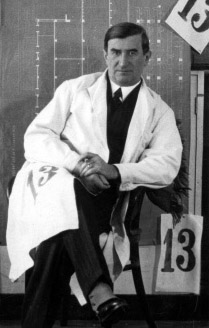
A monograph is being published that completely presents Gočár's work
 |
Gočár (1880 to 1945) is an extraordinary figure in the Czech cultural scene of the first half of the last century. Together with Pavel Janák, Otakar Novotný, Rudolf Stockar, Ladislav Machoň, and Bohumír Kozák, he belonged to a strong generation of designers who earned respect both in the domestic scene and abroad by managing to adapt to rapid stylistic changes.
His work left significant marks in Art Nouveau, modernism, cubism, national decorativism, the so-called Dutch rationalism, modern classicism, as well as in avant-garde constructivism and functionalism. Gočár's modernist Wenke House in Jaroměř, foreshadowing further development of architecture, and the cubist Palace U Černé Matky Boží in the center of Prague have become icons. One of the "flagships" of functionalism is the Church of St. Wenceslas in Vršovice, Prague.
Remarkable are also Gočár's studies and projects that were not realized, such as the project for the completion of the Old Town Hall from 1909 or various variants of the State Gallery complex, which was supposed to be built on Prague's Kampa or Letná.
Gočár also designed interior furnishings and furniture, and in collaboration with leading artists, decorated numerous interiors. His designs for monuments and graves were also significant, created again in collaboration with a number of respected Czech artists: Stanislav Sucharda, Jan Štursa, Otto Gutfreund, František Kysela, Bohumil Kafka, and Karel Dvořák. He was also a first-class urban planner, as evidenced by his work for Hradec Králové, where he created a vibrant modern urban center.
Gočár was also an excellent teacher. Several dozen students passed through his school of architecture, many of whom significantly influenced the domestic scene, such as Jaroslav Fragner, Josef Havlíček, Ladislav Žák, Jan Sokol, Jan Gillar, Pavel Smetana, Evžen Rosenberg, Jan Rejchl, and František Zelenka.
Much has been written about Gočár’s work, but until now there has been no publication that encompasses it all and places it in the context of Czech and European architecture and design. The authors of this monograph, Zdeněk Lukeš, Pavel Panoch, Daniela Karasová, and Jiří T. Kotalík, have attempted to do so. They also contacted three leading Czech photographers, Ester Havlová, Štěpán Bartoš, and Pavel Frič, to newly document Gočár's preserved buildings and interiors.
The English translation is powered by AI tool. Switch to Czech to view the original text source.
0 comments
add comment









